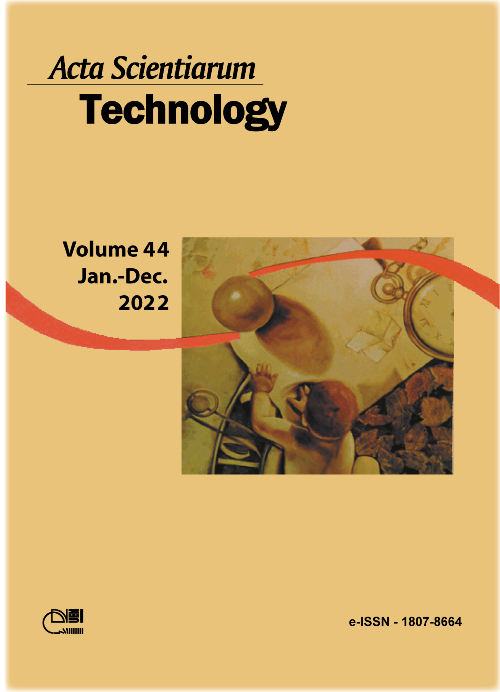Maltodextrin- modified starch microparticles containing benzoic acid: Physical properties and thermal stability
DOI:
https://doi.org/10.4025/actascitechnol.v44i1.56598Palavras-chave:
Modified starch; maltodextrin; blend; spray drying; microencapsulation.Resumo
The microencapsulation of benzoic acid by spray drying can provide amorphous characteristics, which is necessary for its application in foods. In addition, it facilitates the use of this component in a food matrix and prolongs the shelf life of the product. Thus, wall materials with high encapsulation efficiency should be used, such as modified starch and maltodextrin and their combinations. The aim of this study was to evaluate the effect of modified starch (MS) and/or maltodextrin (M) used as encapsulating agents on the chemical and physical properties, morphological parameters, and thermal stability of spray-dried benzoic acid. Three treatments were evaluated: modified starch (MS), maltodextrin (M), and a blend containing modified starch and maltodextrin (MS/M). In general, the variables studied have a significant effect on the responses. The highest efficiency was observed for the treatment MS/M (82.65%); although it presented a lower drying process yield (50%). It was observed that the use of maltodextrin contributed to improving the wettability and solubility of the microparticles since this component is highly water-soluble. The largest microparticle diameter was 19.15 μm (MS/M), and the Span ranged from 1.94 to 2.15 for all treatments, indicating good homogeneity in relation to the particle size distribution. Concerning the particle morphology, the treatment MS/M exhibited partially rough microparticles, while the treatments MS and M led to a higher amount of brittle microparticles. The GAB model was chosen as the best model to explain the isotherm behavior. In addition, the adsorption isotherms of the samples using blend showed a Type-III behavior (non-sigmoidal), common for many foods rich in soluble components. The treatment MS/M has proven to be the most suitable for the encapsulation of benzoic acid being a good and viable option for the food industry
Downloads
Downloads
Publicado
Como Citar
Edição
Seção
Licença
DECLARAÇíO DE ORIGINALIDADE E DIREITOS AUTORAIS
Declaro que o presente artigo é original, não tendo sido submetido í publicação em qualquer outro periódico nacional ou internacional, quer seja em parte ou em sua totalidade.
Os direitos autorais pertencem exclusivamente aos autores. Os direitos de licenciamento utilizados pelo periódico é a licença Creative Commons Attribution 4.0 (CC BY 4.0): são permitidos o compartilhamento (cópia e distribuição do material em qualqer meio ou formato) e adaptação (remix, transformação e criação de material a partir do conteúdo assim licenciado para quaisquer fins, inclusive comerciais.
Recomenda-se a leitura desse link para maiores informações sobre o tema: fornecimento de créditos e referências de forma correta, entre outros detalhes cruciais para uso adequado do material licenciado.















